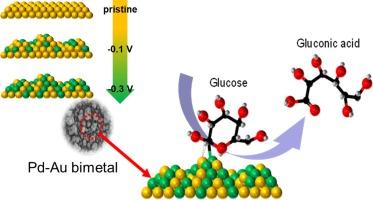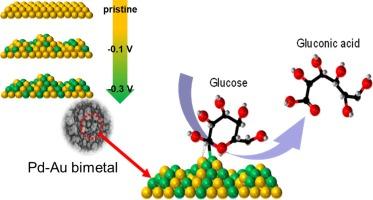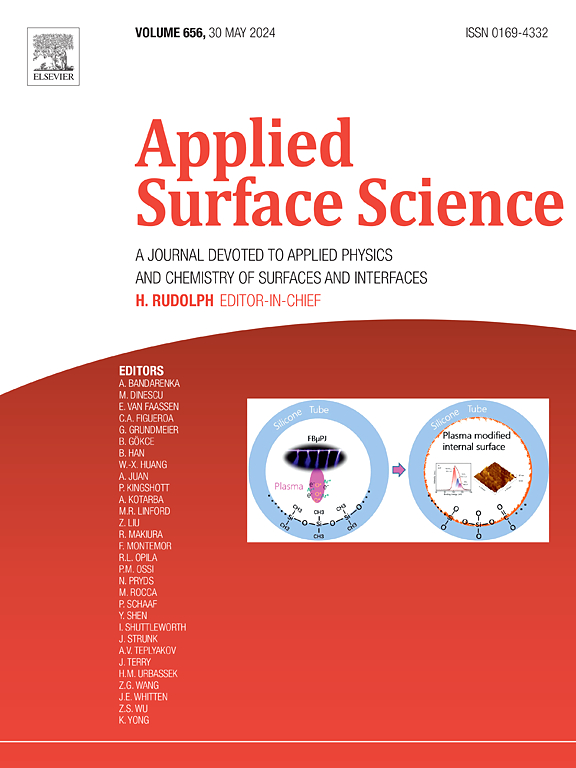Tailored electronic properties of PdAu nanocatalysts via one-step electrodeposition for high-performance glucose sensors
IF 6.3
2区 材料科学
Q2 CHEMISTRY, PHYSICAL
引用次数: 0
Abstract
The development of efficient and reliable glucose sensors is crucial for the early detection and management of diabetes mellitus. This study introduces a novel one-step electrodeposition method for fabricating bimetallic palladium-gold (PdAu) nanocatalysts directly onto gold electrodes, aimed at enhancing the electrocatalytic performance for non-enzymatic glucose sensing. The one-step electrodeposition technique not only simplifies the fabrication process but also enables precise control over the morphology and electronic properties of the PdAu nanostructures. The optimized electronic interactions between palladium and gold within the nanocatalyst significantly enhance electron transfer kinetics, leading to a high electroactive surface area and improved catalytic activity for glucose oxidation. As a result, the PdAu electrodes demonstrated superior glucose sensing capabilities, with a low detection limit of 83 µM and an impressive sensitivity of 67.2 µA mM-1cm−2 across a linear range of 1–8 mM glucose. The catalyst also exhibited excellent selectivity against common interfering species, as well as remarkable stability and reproducibility over an extended period. These findings underscore the significance of the one-step electrodeposition method in producing bimetallic catalysts with tailored electronic properties, offering a promising approach for advancing electrochemical biosensors in diabetes diagnosis.


通过一步电沉积定制 PdAu 纳米催化剂的电子特性,用于高性能葡萄糖传感器
开发高效可靠的葡萄糖传感器对于糖尿病的早期检测和管理至关重要。本研究介绍了一种新颖的一步电沉积方法,用于在金电极上直接制备双金属钯-金(PdAu)纳米催化剂,旨在提高非酶葡萄糖传感的电催化性能。一步电沉积技术不仅简化了制备过程,还能精确控制钯金纳米结构的形态和电子特性。纳米催化剂中钯和金之间优化的电子相互作用大大提高了电子传递动力学,从而产生了高电活性表面积,提高了葡萄糖氧化的催化活性。因此,PdAu 电极表现出卓越的葡萄糖传感能力,在 1-8 mM 葡萄糖的线性范围内,检测限低至 83 µM,灵敏度高达 67.2 µA mM-1cm-2。该催化剂还对常见干扰物具有极佳的选择性,并在较长时间内具有出色的稳定性和可重复性。这些发现强调了一步电沉积法在生产具有定制电子特性的双金属催化剂方面的重要意义,为推进糖尿病诊断中的电化学生物传感器提供了一种前景广阔的方法。
本文章由计算机程序翻译,如有差异,请以英文原文为准。
求助全文
约1分钟内获得全文
求助全文
来源期刊

Applied Surface Science
工程技术-材料科学:膜
CiteScore
12.50
自引率
7.50%
发文量
3393
审稿时长
67 days
期刊介绍:
Applied Surface Science covers topics contributing to a better understanding of surfaces, interfaces, nanostructures and their applications. The journal is concerned with scientific research on the atomic and molecular level of material properties determined with specific surface analytical techniques and/or computational methods, as well as the processing of such structures.
 求助内容:
求助内容: 应助结果提醒方式:
应助结果提醒方式:


